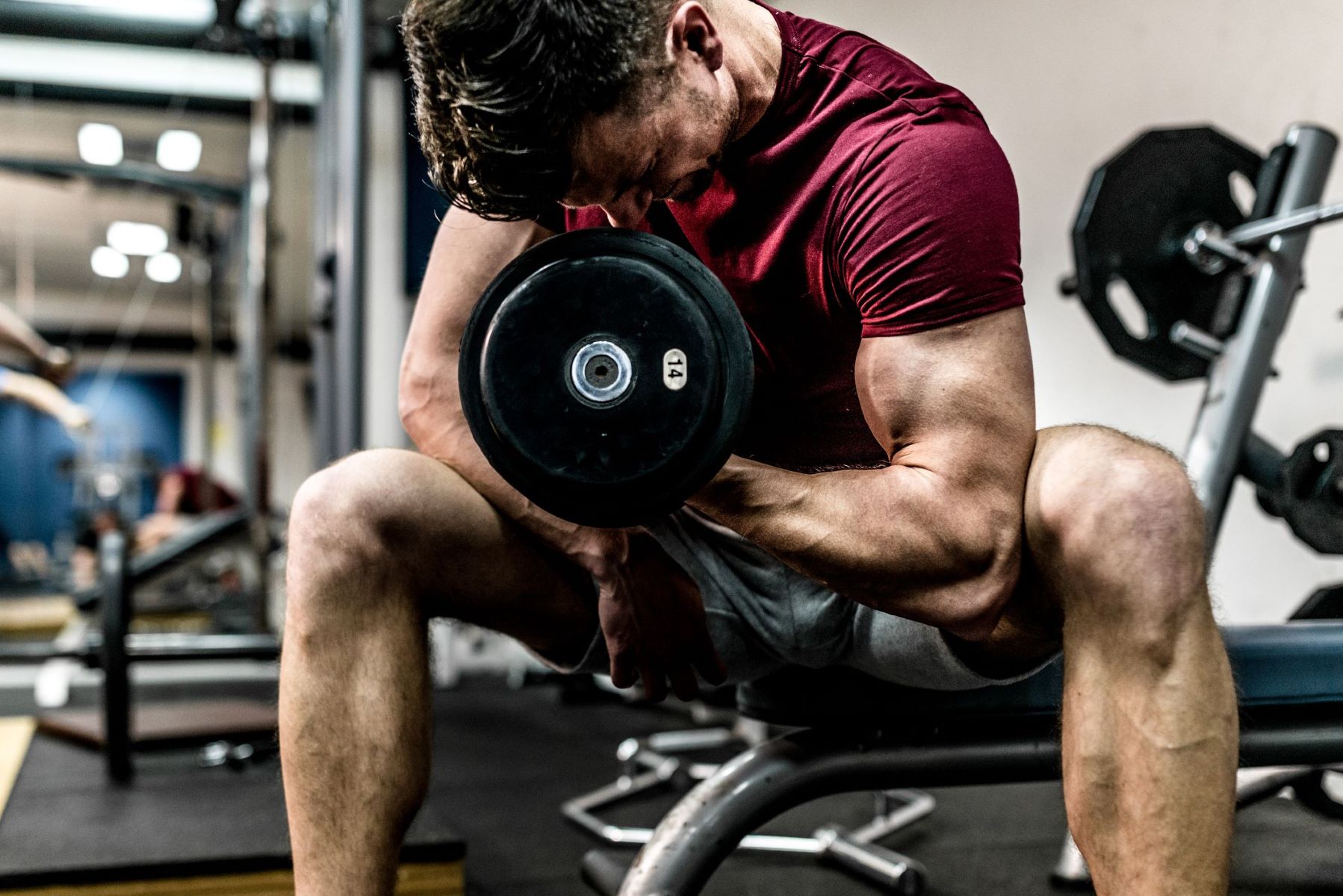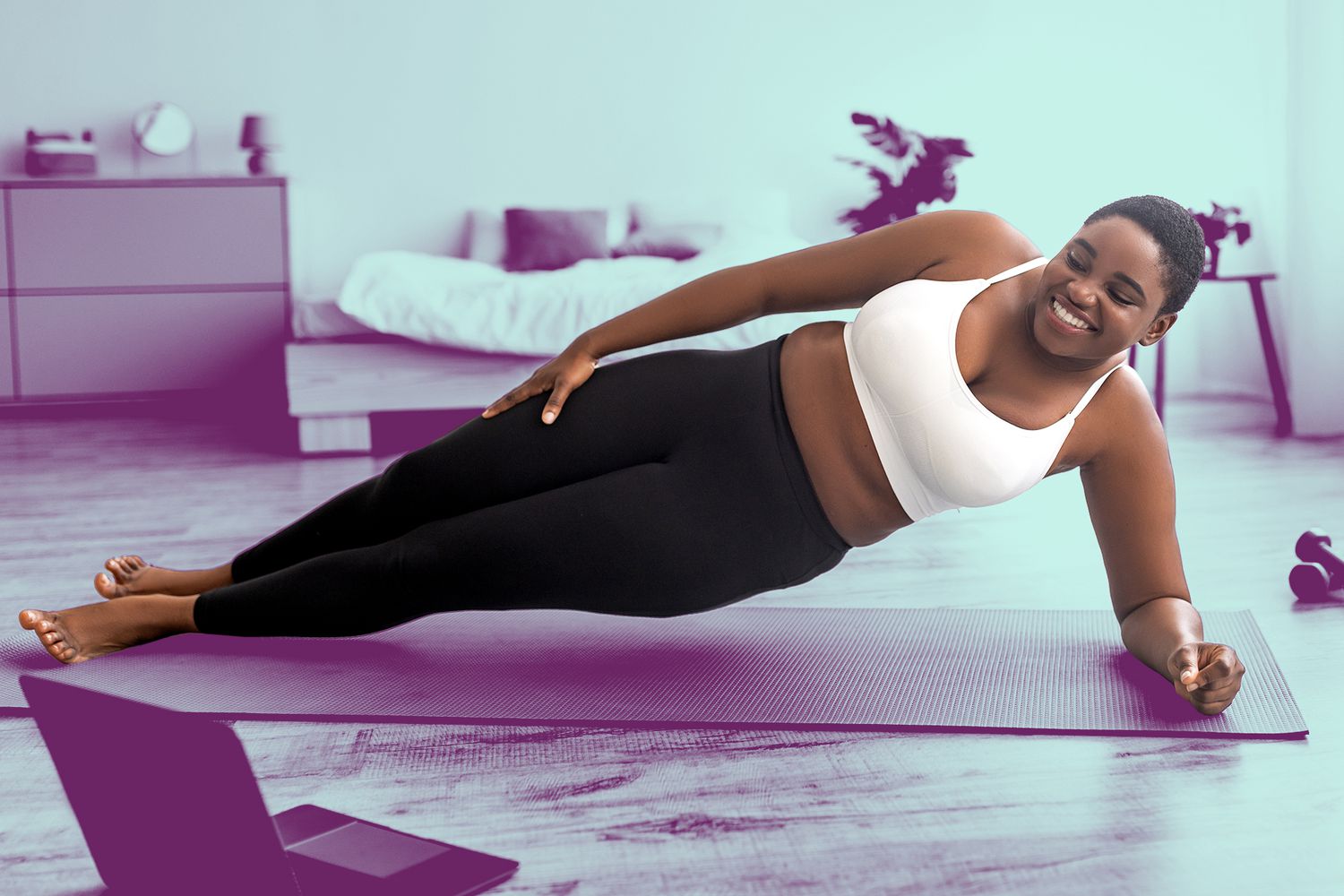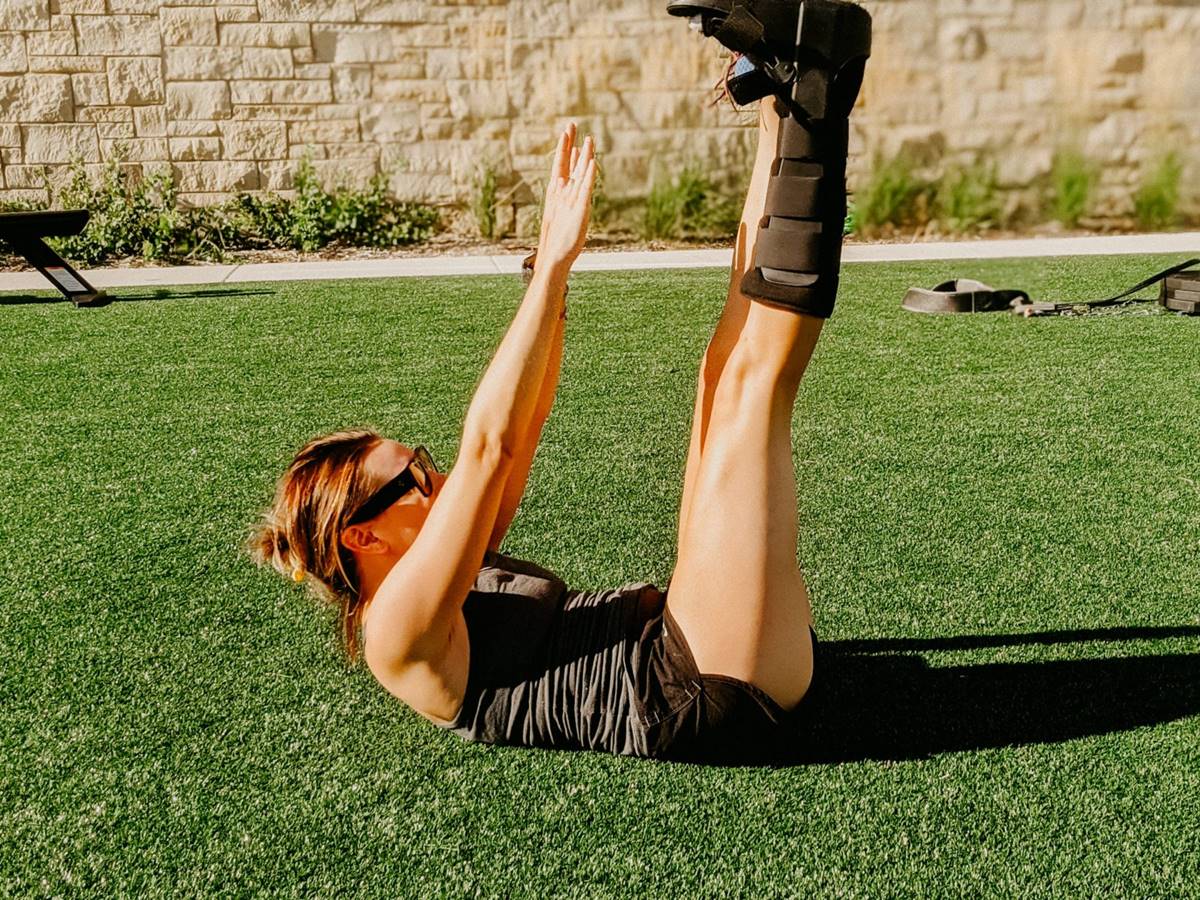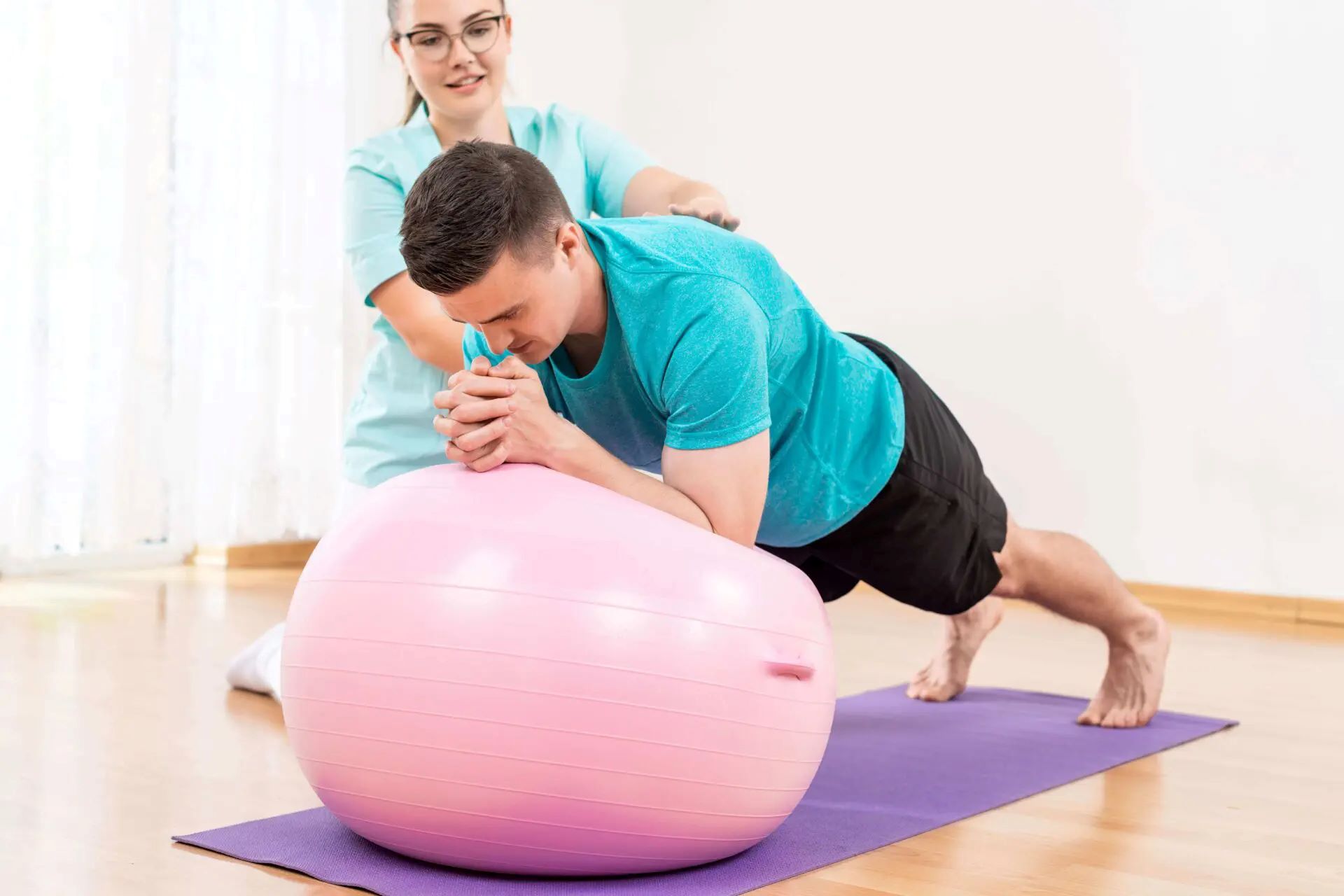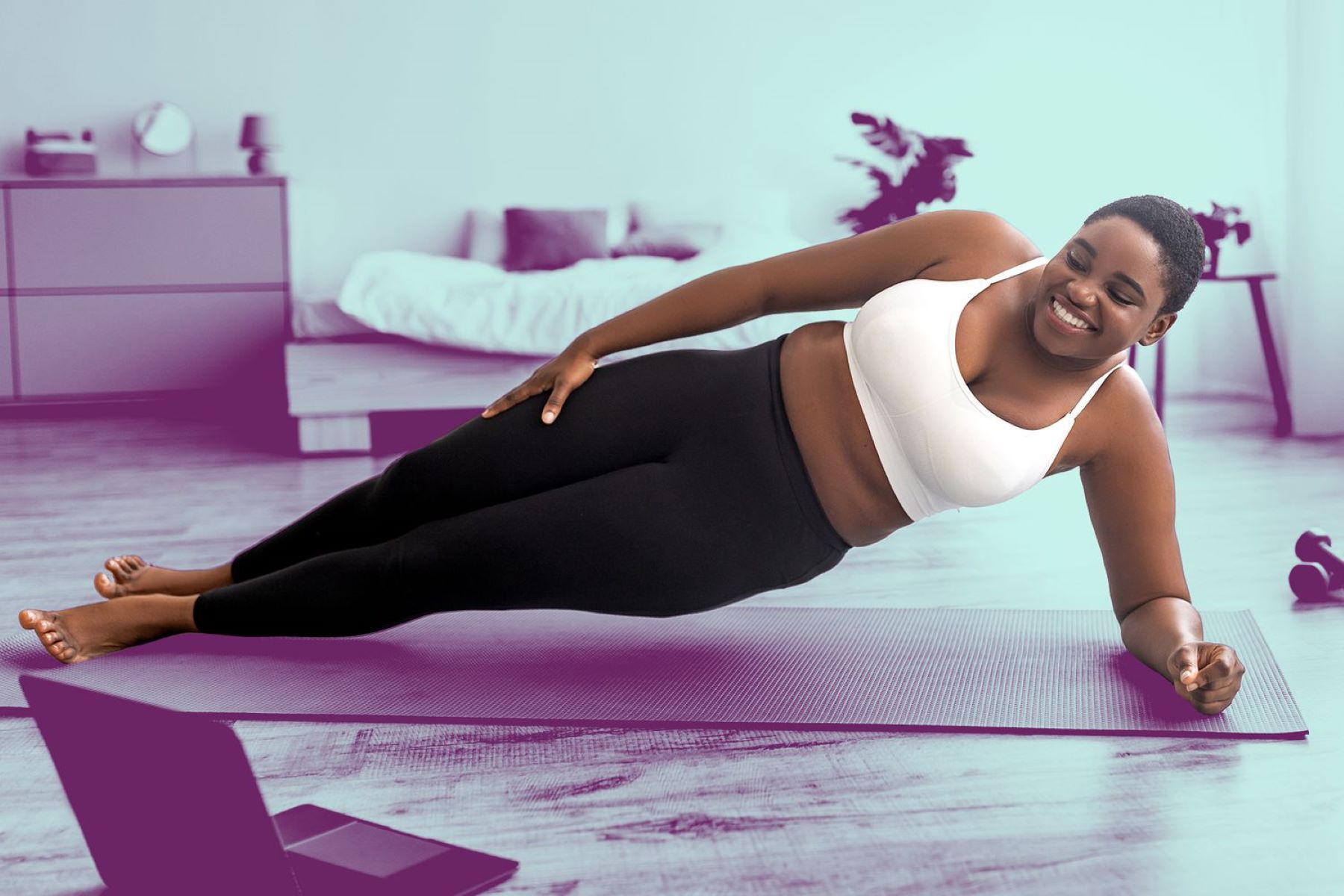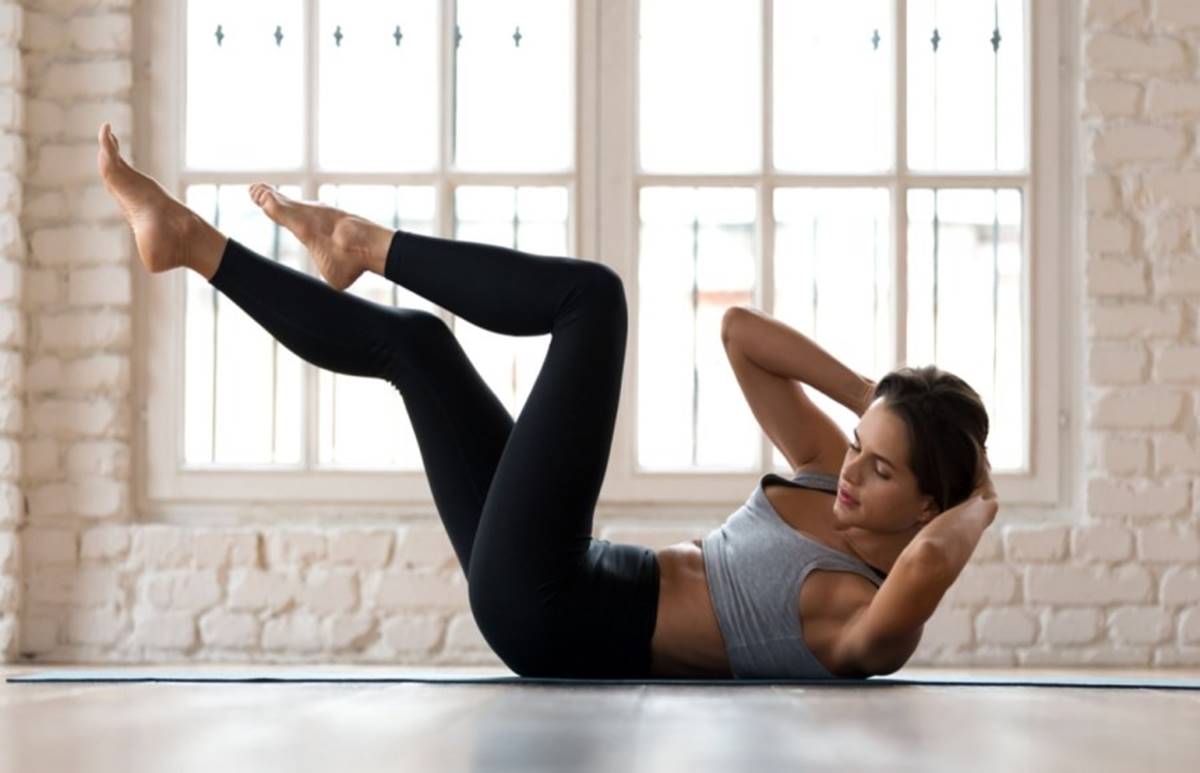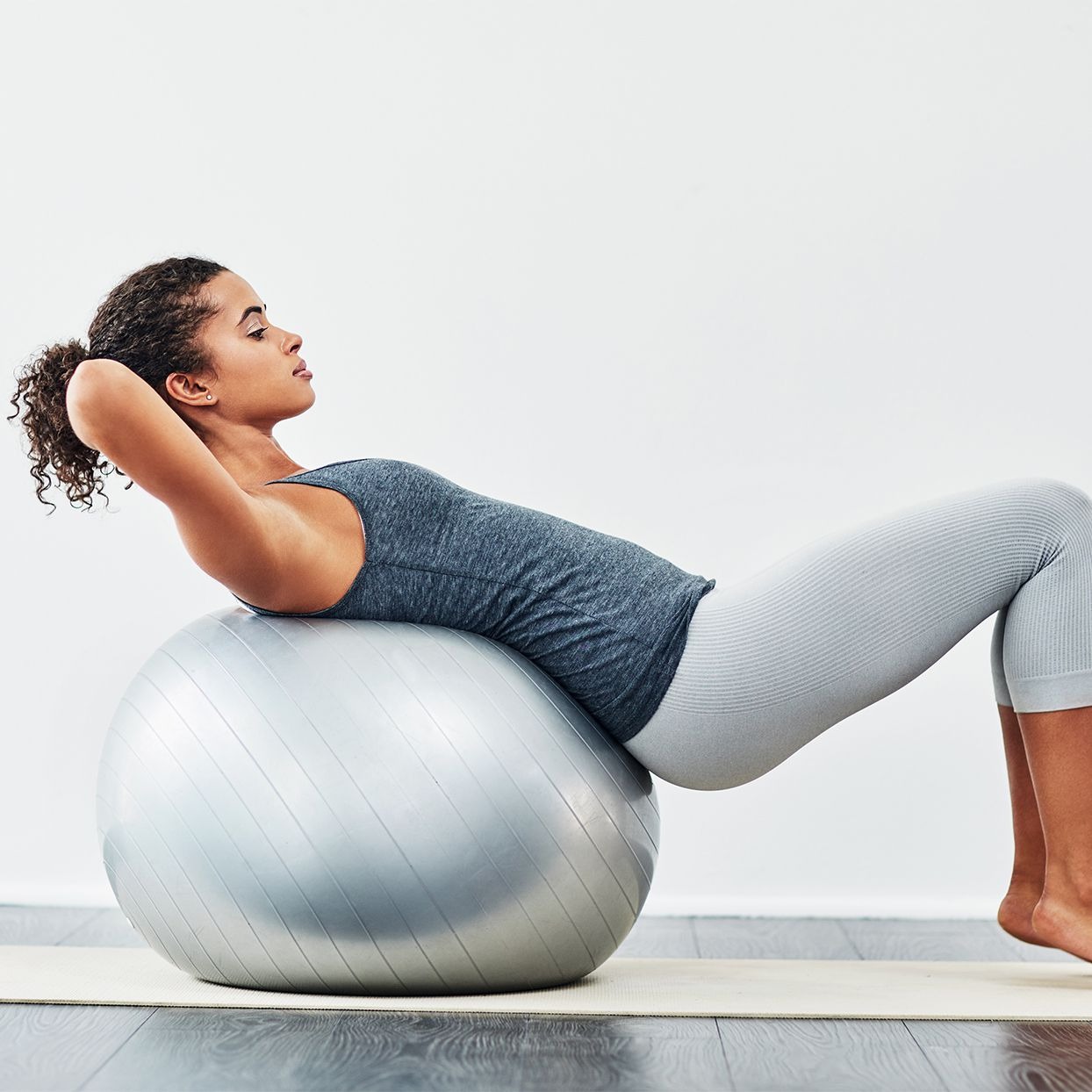

Featured
What Do Crunches Workout
Modified: August 19, 2023
Discover what crunches actually target and how they can improve your core strength. Read our featured article to learn everything you need to know!
Introduction
Crunches are a popular exercise that many people incorporate into their fitness routine to target their abdominal muscles. They are a staple in core strengthening exercises and have gained significant popularity for their ability to help sculpt and tone the midsection.
In this article, we will explore the anatomy of crunches, the targeted muscles, the benefits they offer, the proper technique to perform them effectively, common mistakes to avoid, variations and modifications to challenge yourself, and how to incorporate crunches into your fitness routine for optimal results.
Crunches have been a go-to exercise for individuals looking to tighten their core and achieve a flatter stomach. However, it is important to note that crunches alone may not be enough to achieve visible abs or a six-pack. They should be combined with a well-rounded fitness routine that includes cardiovascular exercise, strength training, and a healthy diet in order to achieve the desired results.
Before we delve deeper into the details, it’s important to consult with a healthcare professional or a certified fitness trainer if you have any existing health conditions or concerns. They can provide personalized guidance and ensure that crunches are appropriate for your individual fitness level and goals.
The Anatomy of Crunches
Crunches primarily target the muscles of the abdominal region, specifically the rectus abdominis, commonly referred to as the “six-pack” muscles. This muscle group is responsible for flexing the spine, allowing us to perform movements like bending forward or bringing our chest towards our knees.
During a crunch, the rectus abdominis contracts, causing the shoulders to lift off the ground and the ribcage to move towards the pelvis. This contraction engages the upper portion of the rectus abdominis, helping to build strength and definition in the upper abdominal region.
In addition to the rectus abdominis, crunches also activate the external obliques and internal obliques. These muscles run diagonally along the sides of the abdomen and assist in torso rotation and lateral flexion.
While crunches primarily focus on the abdominal muscles, they also engage other muscle groups to support the movement. The hip flexors, located at the front of the hips, assist in bringing the upper body towards the knees. The muscles of the lower back, including the erector spinae, help stabilize the spine during the movement.
It is important to note that a proper form and technique are crucial to effectively engage the targeted muscles and maximize the benefits of crunches. This will be further discussed in the upcoming sections.
Targeted Muscles
Crunches primarily target the muscles of the abdominal region, with a specific focus on the rectus abdominis, commonly known as the “six-pack” muscles. These muscles are located on the front of the abdomen and play a key role in torso flexion.
When performing a crunch, the rectus abdominis contracts, causing the spine to flex and the shoulders to lift off the ground. This movement helps to strengthen and tone the upper portion of the abdominal muscles, creating a more defined and sculpted appearance.
In addition to the rectus abdominis, crunches also engage the obliques – both the external obliques and internal obliques. The external obliques are located on the sides of the abdomen, while the internal obliques are deeper and work in conjunction with the external obliques to support twisting and bending movements.
By incorporating crunches into your workout routine, you can effectively engage and strengthen these oblique muscles, helping to create a more toned and shapely waistline.
While the primary focus of crunches is on the abdominal muscles, it’s worth noting that they also engage other muscle groups as secondary movers. The hip flexors, located at the front of the hips, assist in bringing the upper body towards the knees during the crunch. Additionally, the muscles of the lower back, such as the erector spinae, help stabilize the spine during the movement.
Overall, crunches provide a targeted workout for the abdominal muscles, helping to increase core strength, improve posture, and enhance overall stability. Pairing crunches with other exercises that target different muscles groups can help create a well-rounded fitness routine.
Benefits of Crunches
Crunches offer several benefits for individuals looking to strengthen their core and improve their overall fitness. Let’s explore some of the key advantages of incorporating crunches into your workout routine:
- Strengthening the abdominal muscles: As mentioned earlier, crunches primarily target the rectus abdominis and oblique muscles. By regularly performing crunches, you can strengthen and tone your abdominal muscles, leading to a tighter and more defined midsection.
- Improved core stability: Strong abdominal muscles are essential for maintaining proper posture and overall stability. Crunches help to develop core strength, which in turn can enhance your balance, reduce the risk of injuries, and support your performance in various physical activities.
- Enhanced sports performance: A strong and stable core is essential for optimal performance in many sports and physical activities. Whether you’re playing basketball, running, or participating in martial arts, a solid core can improve your agility, power, and overall athletic performance.
- Reduced lower back pain: Weak abdominal muscles can contribute to lower back pain and poor posture. By strengthening the core through exercises like crunches, you can alleviate lower back pain and improve your overall spinal stability.
- Versatility and convenience: Crunches can be performed virtually anywhere – at the gym, at home, or even in a hotel room while traveling. They require minimal to no equipment, making them a versatile and convenient option for incorporating into your fitness routine.
- Increased calorie burn: While crunches themselves may not burn a significant number of calories, incorporating them into a high-intensity interval training (HIIT) or circuit training workout can help boost overall calorie burn and contribute to weight loss or maintenance goals.
It’s important to note that while crunches offer numerous benefits, they should be complemented with a well-rounded exercise routine that includes cardiovascular exercise, full-body strength training, and a balanced diet to achieve overall fitness and a healthy body composition.
Proper Crunch Technique
Performing crunches with the proper technique is essential to effectively engage the targeted muscles and minimize the risk of injury. Follow these steps to ensure you are executing crunches correctly:
- Starting Position: Lie flat on your back with your knees bent and your feet flat on the ground. Place your hands gently behind your head, avoiding any pulling or straining of the neck.
- Engage the Core: Before initiating the movement, engage your core by drawing your navel towards your spine. This will help stabilize your torso and ensure the abdominal muscles are the primary focus of the exercise.
- Elevation: Slowly lift your shoulders and upper back off the ground, while keeping your lower back firmly pressed into the floor. Focus on using your abdominal muscles to lift, rather than relying on momentum or pulling with your arms. The movement should be controlled and deliberate.
- Peak Contraction: At the top of the movement, exhale and squeeze your abdominal muscles, making sure to avoid any strain on your neck or upper body. Hold this position briefly to fully engage the muscles.
- Release: Slowly lower your upper body back to the starting position, maintaining control, and keeping your core engaged throughout the entire range of motion.
- Repeat and Sets: Aim to perform 10-15 repetitions of crunches in each set, depending on your fitness level. Gradually increase the number of sets as your strength improves.
It’s important to note that quality is more important than quantity when it comes to crunches. Focus on proper form and technique, rather than trying to rush through the exercise. Take breaks when needed, and always listen to your body.
If you are a beginner or have any underlying health conditions, consider seeking guidance from a qualified fitness professional who can provide personalized instruction and modifications to suit your needs.
Common Mistakes to Avoid
While crunches can be an effective exercise for targeting the abdominal muscles, it’s important to be aware of common mistakes that can hinder your progress and potentially lead to injury. Avoid these common errors to ensure you are getting the most out of your crunches:
- Neck Strain: One of the most common mistakes during crunches is pulling on the neck or placing excessive strain on it. Remember to keep your hands lightly touching behind your head, but avoid using them to pull as you lift your upper body. This prevents unnecessary stress on the neck muscles and keeps the focus on the abdominal muscles.
- Using Momentum: Swinging your body or using momentum to lift your upper body during crunches can diminish the effectiveness of the exercise. Focus on controlled movements, using your abdominal muscles to initiate and complete each repetition. Slowing down the pace will ensure proper muscle engagement.
- Flattening the Lower Back: Allowing the lower back to lift off the ground or flatten completely can put pressure on the spine and reduce the engagement of the abdominal muscles. Keep your lower back pressed firmly against the floor throughout the entire movement to maintain proper spinal alignment and maximize the effectiveness of the exercise.
- Not Engaging the Core: Neglecting to engage the core before performing crunches decreases the effectiveness of the exercise and increases the risk of injury. Take a moment to activate your core by drawing your navel towards your spine before lifting your upper body off the ground. This helps stabilize your torso and ensures the abdominal muscles are properly targeted.
- Insufficient Range of Motion: Failing to lift the upper body high enough during crunches can limit the muscles’ engagement and reduce the overall effectiveness of the exercise. Focus on lifting your shoulders and upper back off the ground as much as possible while maintaining proper form, without straining the neck or sacrificing control.
- Overtraining: While crunches can be beneficial, performing them excessively without allowing sufficient rest and recovery can lead to overuse injuries. Make sure to incorporate variety into your workout routine, targeting other muscle groups and giving your abs time to recover between workout sessions.
By avoiding these common mistakes and focusing on proper form and technique, you can maximize the benefits of crunches and reduce the risk of injury throughout your fitness journey.
Variations and Modifications
While traditional crunches are effective, adding variations and modifications to your ab workout can help keep your routine fresh and provide new challenges for your abdominal muscles. Here are some variations and modifications to consider:
- Reverse Crunches: Instead of lifting your upper body off the ground, reverse crunches involve lifting your hips and lower back off the ground while keeping your upper body stationary. This variation targets the lower abdominal muscles and can be an effective way to switch up your routine.
- Bicycle Crunches: Bicycle crunches target not only the rectus abdominis but also the obliques. Lie on your back and perform a crunch while simultaneously bringing one knee towards your chest and extending the opposite leg. Alternate sides in a cycling motion to engage the obliques.
- Plank Holds: Plank holds are an excellent alternative to crunches that engage the entire core. Start in a push-up position and lower onto your forearms, keeping your body in a straight line from head to toe. Hold this position for 30 seconds to a minute, focusing on keeping your abs engaged and maintaining proper form.
- Weighted Crunches: To add an extra challenge, hold a weight plate or dumbbell against your chest while performing crunches. The added resistance can increase the intensity and help stimulate further muscle growth in the abdominal region.
- Stability Ball Crunches: Performing crunches on a stability ball adds an element of instability, engaging more muscles in your core to maintain balance. Sit on the stability ball and slowly roll your body down until your lower back is supported. Perform crunches as usual while keeping the ball stable.
- Oblique Crunches: Target the oblique muscles by performing side crunches. Lie on your back with your knees bent. Place your hands behind your head and twist your torso, bringing your right elbow towards your left knee. Repeat on the other side to engage and strengthen the obliques.
Remember to choose variations and modifications that suit your fitness level and goals. Gradually increase the difficulty as your strength improves to ensure continued progress and maximize the benefits of your workout.
Incorporating Crunches into Your Fitness Routine
Crunches can be a valuable addition to your overall fitness routine for strengthening your core and enhancing abdominal muscle definition. Here are some tips for effectively incorporating crunches into your workout:
- Warm-Up: Begin your workout with a proper warm-up to increase blood flow and prepare your muscles for exercise. Perform dynamic stretches and light cardio to warm up your body, focusing on the abdominal area.
- Frequency: Aim to perform abdominal exercises, including crunches, 2 to 3 times per week. Giving your muscles time to rest and recover is crucial for optimal growth and development.
- Variety: To challenge your muscles and prevent plateau, incorporate different variations of crunches into your routine. Alternate between reverse crunches, bicycle crunches, and plank holds to target different areas of the abdominal muscles.
- Progressive Overload: As your strength increases, gradually increase the difficulty of your crunches. This can be done through the addition of weights, increasing repetitions or sets, or performing more challenging variations.
- Full-Body Workout: While crunches are great for targeting the abdominal muscles, it’s essential to include a variety of exercises that work other muscle groups. This will result in a more balanced and effective workout routine.
- Combine with Cardio: To achieve visible abs, it’s important to incorporate cardiovascular exercise to reduce overall body fat. Combine your crunches with activities like running, swimming, or cycling to increase calorie burn and promote a leaner physique.
- Nutrition and Hydration: A healthy diet and proper hydration are essential for muscle growth and overall fitness. Maintain a balanced diet rich in lean proteins, fruits, vegetables, and whole grains to support your abdominal muscle development.
- Listen to Your Body: Pay attention to your body and modify or take breaks as needed. Pushing through fatigue or pain can increase the risk of injury. If you experience any discomfort during crunches, consult with a professional to ensure proper form and technique.
Remember, results take time, so be patient and consistent with your fitness routine. By incorporating crunches strategically into your overall workout plan and following a healthy lifestyle, you can improve your core strength, enhance abdominal muscle definition, and achieve your fitness goals.
Conclusion
Crunches are a popular and effective exercise for targeting the abdominal muscles and improving core strength. By consistently incorporating crunches into your fitness routine, you can achieve a tighter and more defined midsection. However, it’s important to remember that crunches alone may not be enough to achieve your desired results. They should be complemented with a well-rounded exercise routine that includes cardiovascular workouts, full-body strength training, and a balanced diet.
Understanding the proper technique for performing crunches is essential to maximize their effectiveness and minimize the risk of injury. Engaging the core, maintaining proper form, and avoiding common mistakes such as neck strain or using momentum are crucial to achieving the desired results.
Additionally, incorporating variations and modifications can help keep your routine exciting and challenging. Reverse crunches, bicycle crunches, and weighted crunches are just a few examples of how you can add variety to your abdominal workout and target different areas of the core.
Remember to listen to your body and progress at a pace suitable for your fitness level. Pushing yourself too hard or neglecting proper form can lead to injuries, so always prioritize safety during your workout sessions.
Incorporating crunches into your fitness routine, along with a focused and holistic approach to exercise and nutrition, can help you achieve your goals of a stronger core and a more defined midsection. Stay consistent, be patient, and celebrate your progress along the way. With dedication and the right mindset, you’ll be on your way to a stronger and healthier you.


